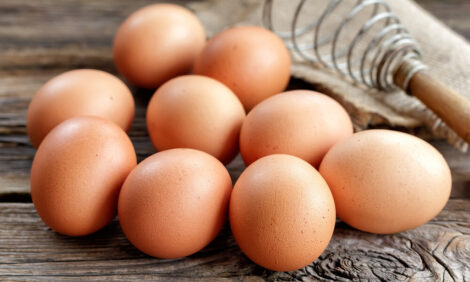



View from the Countryside - Farmers Showing Stoicism Amid Bird Flu Restriction Challenges
UK - The view of avian influenza from the countryside is one of stoic acceptance, writes Richard Gard, as farmers try their best to improve biosecurity and prevent the spread of disease.The last outbreak in a commercial UK flock was confirmed on 30 January. But each week in 2017 cases in wild birds have been confirmed, including the first week of the year when nine mute swans died in Dorset, a widgeon died in Devon and a teal in Conwy. Overall nine different species of birds have been found affected by avian flu this year in ten different counties, showing the seriousness of the situation.
Restrictions make poultry farming harder
Speaking to producers it is clear that complying with the restrictions is becoming the greatest issue. At present the additional food consumption recorded by producers, for poultry that must currently be housed rather than free range, is up by around 40 per cent. The need to manage the free range bred birds to reduce pecking, parasites and boredom is taxing. Fluffing up the bedding has become a more regular activity.
With a short period to go before the crunch date of 28 February for free range flocks, when new regulations are expected to come in for England making bird flu restrictions more specific to geographical risk levels, it is very important to now push into a high biosecurity gear. Lessons have been learned from past viral contamination in the countryside and it is not always the farmer that takes the most deliberate precautions that keeps disease at bay, but we can all only do our best.
Limiting sources of contamination
Basically, wild bird dung is the main threat to poultry. My neighbour has many thousands of hens that, hopefully, will soon be let out into the countryside. A footpath runs through the middle of their farm, past the pens, where the farm vehicles and people mix. An extra biosecurity measure would be to put a sign at each end of the path asking people to avoid using the footpath.
The post-lady drives from farm to farm, up muddy lanes, where most locations have a few fowls. Setting up a temporary post box at the end of the lane, so that there is no risk from her vehicle, appears a practical measure that would send a local message that the threat of bird flu is a serious item and not media hype. In this area there are daily delivery vans with internet goods going from parish to parish. Asking the companies to deliver to a neighbour nearby may work, but a more effective measure to prevent this source of contamination would be to ask the family not to order online for a few weeks.
Of direct relevance to all producers will be the cleanliness of water sources when the birds are eventually let out. If there is a stream or ditch, walking upstream to check for anything untoward may yield a dividend, not just relating to the bird flu virus.
One of the difficulties is not knowing how long the virus remains a threat. Once the virus is exposed to sunlight the risk of infection falls rapidly but within a lump of dung, covered in mud, the longevity increases. If the disease is found on a premises then the full power of the authorities descends but the aim is to take the utmost precautions now so that in years to come the grandchildren will not be reflecting on the ‘great cull’. Taking extra care with disinfecting vehicles, boots, clothing and implements is highly appropriate to prevent the spread of wild bird dung around the farm.
Future threats?
Looking to the future, if bird flu remains as primarily a disease spread by contamination from wild birds then the precautions of biosecurity and housing are expected to be successful control strategies. Identifying accurately the source of infection with outbreaks in commercial flocks will be essential information to guide future actions. Purchasing virus free stock, particularly from areas where disease has been recorded, will require positive vetting.
If, however, the disease becomes endemic in UK flocks then the fact that the virus can evolve new strains creates a whole raft of difficulties, such as rendering vaccination or disease resistance ineffective. No doubt the scientific community will be advising ways forward. It is hoped that the research institutes will have answers and further enquiries will be of great interest.
Farmers are under pressure from this disease, but they are taking each restriction as it comes and making the best of a very serious disease threat and the inflexible regulations.








